- News
- Subscribe
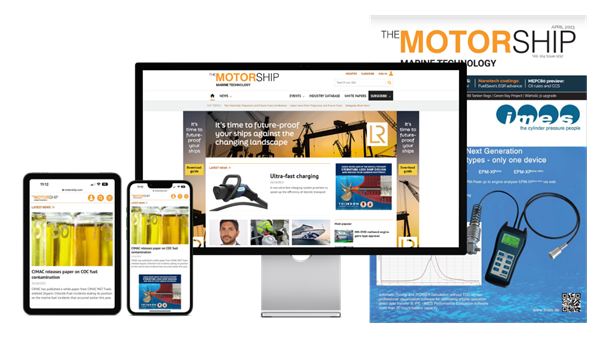
Get full access to The Motorship content
Including the digital magazine, full news archive, podcasts, webinars and articles on innovations and current trends in the shipping industry.
- Expert analysis and comment
- Unlimited access to in-depth articles and premium content
- Full access to all our online archive
Alternatively REGISTER for website access and sign up for email alerts
- Special Reports
Ammmonia
Methanol
BioFuel & Clean Diesel
Nuclear
LNG
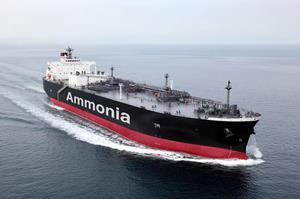
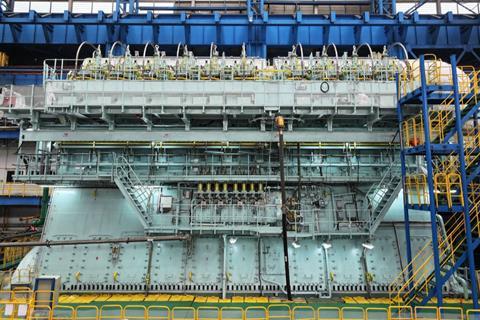
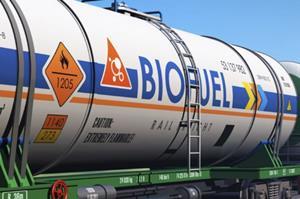

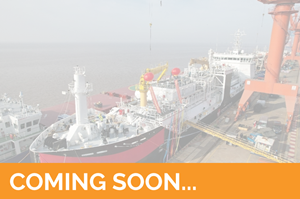
Using an abundant, if toxic, resource to power the maritime fleet. A mature future fuel already in use - but will it become dominant? Numerous NGOs protested against the IMO earlier this year putting biofuels in its Global Fuel Standard, but the “fuel versus food” debate seems to have been solved by deriving fuels from waste. Technically the cleanest possible fuel source available to the maritime world and one that has the longest history, dating back to the 1950s. Why is it not in common, non-military use? LNG is currently the most popular lower carbon fuel, but with bio and e-LNG it could move beyond its current transition fuel status supported by extensive existing infrastructure. Read More Read More Read More Read More Read More
- Industry Database
- Events

Propulsion & Future Fuels Conference 2025
The Motorship’s Propulsion & Future Fuels is the leading international conference on powering shipping’s emissions-cutting ambitions.
The 2025 Conference will take place from 25th - 27th November in Hamburg, Germany and will offer a meeting place to learn, discuss and knowledge-share the latest developments in efficient power and propulsion technology plus alternative low flashpoint and low carbon fuels.
Click here for more information
White Papers
The Motorship collates technical white papers from several industry sources, available to all registered readers.
Making for safer fuel switchovers
While fuel cells were once seen as the future, their development has been slow and the fall-back position has been the marine diesel engine in any of its forms.
Minimising emissions from internal combustion engines
“The time is now for marine operators and engine manufacturers to accelerate their emissions reduction journey. This white paper provides everything they need to know to do that, and we can provide an in-house solution for all their needs.” Dr Roman Drozdowski, Managing Director, KBB.“Diesel engines are the backbone of ...
Extending the engine research toolbox to validate clean shipping fuels
WinGD has published a white paper Future ready: Extending the engine research toolbox to validate clean shipping fuels, in which the company details the engine research toolbox it has amassed, including sophisticated testing facilities for engines and fuel systems, cutting-edge simulation techniques and a proprietary process for validating new ship ...
ABS: Methanol as marine fuel
ABS has published guidance on Methanol as Marine Fuel, evaluating the challenges in design and operation of methanol-fuelled vessels.
Guidelines on Cyber-Security Onboard Ships
The fourth edition of the industry cyber risk management guidelines, Guidelines on Cyber Security Onboard Ships is now available and lays the foundation for further improvements and refinement of companies’ cyber security risk assessments.
ABS: Ammonia as marine fuel
ABS has published guidance on Ammonia as Marine Fuel, evaluating the challenges in design and operation of ammonia-fuelled vessels.
Guidelines to Minimise the Risk of Hydrogen Embrittlement
William Hackett, the offshore lifting hoists and chains specialist, has published a report to help minimise the risk of Hydrogen Embrittlement (HE) and Stress Induced Corrosion Cracking (SICC). The report includes guidance on material choices used in topside and subsea lifts, and is seen as a major step forward in ...
ABS: Gas and Other Low-Flashpoint Fuel Ready Vessels
ABS has published the ABS Guide for Gas and Other Low-Flashpoint Fuel Ready Vessels to support shipowners looking to build a new vessel or convert an existing one to use LNG, methanol, ethane, LPG, hydrogen, ammonia and other gases or low-flashpoint fuels.
MAN ES: Adverse weather condition functionality and minimum propulsion power
In a new white paper, MAN ES examines how the tightening requirements of Energy Efficiency Design Index (EEDI) are driving increased demands for energy efficiency on merchant vessels. This has led to concerns about a potential lack of propulsion power during adverse weather conditions.
LR: Introduction to Methanol Bunkering
In a new technical reference document, Lloyd’s Register (LR) and the Methanol Institute (MI) have produced a Bunkering Technical Reference on Methanol. The new guidance outlines the procedures required for the safe bunkering of methanol and incorporates dedicated checklists to assist shipowners/operators, ports, bunker suppliers and other stakeholders with safe ...
Svanehoj: From Oil to Electrofuels
In a new white paper, Svanehøj looks into Power-to-X (PtX), which could be a key technology in the transition away from fossil fuels. PtX offers a solution to convert electricity from renewable energy sources into carbon-neutral synthetic fuels – gas or liquid – which can be stored and used to ...
Chevron: Taking the Temperature of 2020 Fuel Switch
In the wake of the introduction of IMO’s global sulphur cap on 1 January 2020, Chevron Marine Lubricants takes stock of the lessons about how to ensure the safe and reliable operation of main engines.
MAN ES: Managing Methane Slip
As part of the Maritime Energy Transition, MAN ES sees fuelling with LNG as a first step in preparing engines for the broader use of a range of synthetic fuels, on the way to carbon- neutrality.
Commissioning sampling for BWTS
A requirement for water sampling to be conducted in connection with commissioning testing – more simply expressed as commissioning sampling – is being introduced for newly installed ballast water treatment systems. The IMO requirement was laid out at MEPC 74 in an amendment to the International Convention for the Control ...
Paris MoU: Temporary Guidance Related to COVID-19 For Port State Control Authorities
The Paris Memorandum of Understanding on Port State Control (Paris MoU) has amended its previously drafted guidelines in response to the continuing COVID-19 pandemic. The guidance is being made publicly available to appropriately inform the industry.
ExxonMobil Marine: Imagining the Future of Lubrication
The development of new more environmentally-friendly engine designs is set to accelerate as the industry ramps up efforts to meet the IMO’s 2050 decarbonisation targets. ExxonMobil Marine notes that engines in the maritime sector will be powered by a range of alternative fuels, along with methanol, LPG and ammonia.
Production Pathways for Hydrogen with a Zero Carbon Footprint
There are a number of pathways for the shipping industry to achieve the 2050 emission reduction targets of the Initial IMO GHG Strategy. Besides other technical and operational energy efficiency measures, employing zero carbon or net zero carbon fuels seems the only way to achieve the GHG reduction level aimed ...
Lubricating Dual-Fuel Auxiliary Engines: A Practical Approach
As an increasingly diverse marine fuels market adds complexity for ship operations, owners are looking for simplified solutions to optimise engine performance. Chevron Marine Lubricants’ recent work with dual-fuel four-stroke engines highlights a practical approach to these challenges.
Flexible Injector to Advance Alternative Fuels Research
WinGD has developed a flexible injection system that will allow it to investigate liquid fuels with the potential to reduce shipping’s emissions. The system will also help the engine designer to develop new injection concepts allowing its two-stroke engines to burn emerging clean liquid fuels produced from biomass or renewable ...
Reducing NOx emissions from ship exhaust
Air pollution is the single largest environmental health risk and responsible for the premature deaths of an estimated 7 million people worldwide each year. Air pollution contributes to the global burden of air pollution-related disease, the World Health Organization reports. Nine out of 10 people breathe air containing high levels ...
VLSFO challenge: looking deeper for lubricant performance
Legacy cylinder oils may not protect ship engines from the variable fuel characteristics of very low sulphur fuel oil (VLSFO), global additive supplier The Lubrizol Corp has advised. In a new whitepaper, Lubrizol outlines the research that underpins its advice that ship owners should use lubricants specifically formulated for these ...
Dynamic Torsional Stiffness of Natural Rubber in Shear Couplings
Flexible couplings are used to reduce torsional vibration and noise in drivelines, effectively isolating the prime mover from the driven equipment. The critical dynamic behavior is characterized by the first torsional mode of the system and the dynamic stiffness of the coupling is the primary control for adjusting this natural ...
Environmentally Acceptable Lubricants: Beyond the label
The U.S. Environmental Protection Agency’s (EPA) Vessel General Permit (VGP) regulation continues to have a significant impact on marine operators’ lubricant selection. This paper will address key industry concerns and confusion around Environmentally Acceptable Lubricants (EALs) and provide guidance on the selection of the most appropriate EAL by application.
Wärtsilä High Friction Couplings
Technologies relating to ship design and operation have evolved over the years, creating greater efficiencies and extended lifespans for shaft line equipment. These developments are typically born by customer needs. One such market demand is to have a larger shaft line torque capacity with reduced shaft dimensions. This requirement refers ...
Datum Electronics: How Measuring Shaft Power Can Save Money on Fuel & Maintenance
The Energy Efficiency Design Index (EEDI) and the Ship Energy Efficiency Management Plan (SEEMP) requirements were made legally binding by the MARPOL Annex VI, the first climate change treaty to be adopted since the Kyoto Protocol. The technical requirements in this treaty are aimed at promoting the use of more ...
Practical Considerations for the Installation of Exhaust Gas Cleaning Systems
Interest in installing an exhaust gas cleaning system (EGCS) or scrubber has never been higher, as the IMO 2020 global sulphur limit requirements which will enter effect on 1 January 2020. As the remaining time to complete the installation of an EGCS elapses, it is more relevant than ever to ...
Benefits of Screw Pumps in Shipbuilding Applications
Traditionally, centrifugal pumps have been a go-to technology that shipbuilders have used on their vessels for various fluid-transfer applications. This white paper, however, will show how an oftentimes overlooked pumping technology – positive displacement twin- and triple-screw pumps – can be a more versatile, reliable and efficient alternative to centrifugal ...
Alternative fuels for an LR1 tanker: Costs and benefits
The sulphur emission control areas (SECAs) in place in North-America and Northern Europe, in combination with the upcoming global 0.5% limit on sulphur in 2020 (or 2025) and similar EU limits in 2020, call for alternative fuels as a means for compliance. Several alternative fuels are available and, at the ...
The need for speed in scrape down oil analysis
The marine industry faces a variety of substantial challenges. Capacity oversupply continues to supress freight rates, squeezing margins and damaging bottom line performance, while the International Maritime Organization’s (IMO) imminent change to emission regulations threatens to increase the financial burden.
The Benefits of Ballast Water Treatment During the Voyage
This paper discusses a common aspect of many Fully Type Approved inline ballast water treatment systems. Inline ballast water treatment systems interrupt main ballast water flow with a filtration mechanism.
Wärtsilä HY: Integrated hybrid power module
The world is moving very fast for owners and operators in today’s marine industry. Environmental awareness and changing energy needs are playing a vital role in creating new challenges while opening the door to exciting opportunities.
ABB: B0 – a conditionally and periodically unmanned bridge
This paper presents a concept of B0 – conditionally and periodically unmanned bridge – which enables more efficient utilization of vessel crew, reduction in fatigue and increases safety by enabling an unmanned bridge provided that certain conditions are met. It also reviews the main tasks of the crew at the ...
IMO: More than enough quality MFO 0.5% if the price is right
Bjarne Schieldrop, chief commodities analyst at SEB, the Nordic corporate bank, has released a new report on the International Maritime Organisation’s (IMO) 2020 sulphur emissions regulations for global shipping. Key points include:
Marine SCR technology: Airless vs air-assisted dosing
Caterpillar has designed and optimized our U.S. EPA Tier 4 Final and IMO Tier III Marine solutions with Selective Catalytic Reduction (SCR) technology. This solution enables Caterpillar to deliver our critical customer requirements, such as the proven reliability and durability of our engines, fully integrated solutions, and lowest total cost ...
ICS: Compliance with the 2020 ‘Global Sulphur Cap’
From 1 January 2020, in accordance with MARPOL Annex VI1 , the sulphur content of fuel oil used on board commercial ships trading outside sulphur Emission Control Areas (ECAs)2 must not exceed 0.50% m/m.
The benefits of the Metalock process
A damaged main engine cylinder casing has now been returned to service in Bulgaria, after a repair operation lasting just seven days, saving almost eight months of off-hire time.
Wärtsilä Sea-Master system
The maintenance, inspection, and overhaul scheduling of a vessel’s tail shaft equipment continues to be largely preset based on the number of operating sea hours. This is in accordance with the manufacturer’s recommendations and various marine classification standards. This often means that servicing tasks are carried out before they are ...







































